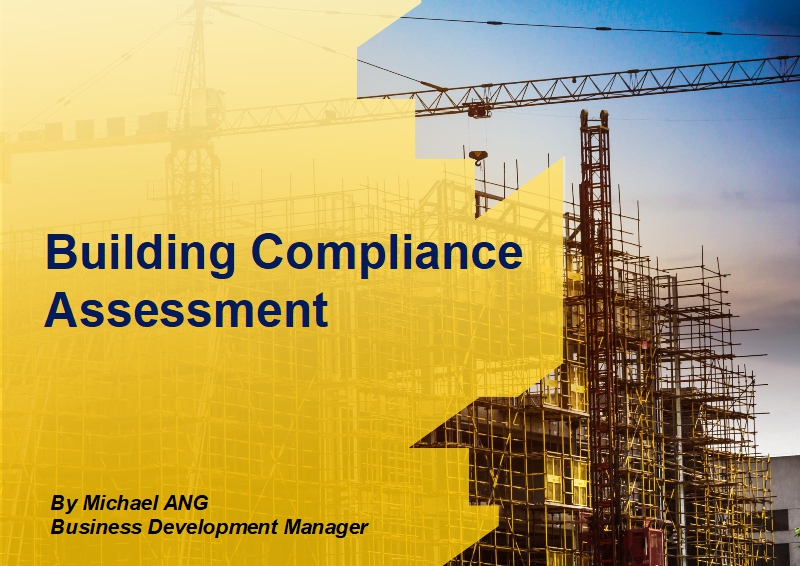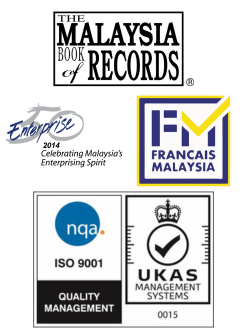Author: Michael ANG | 24 January, 2021
Building Compliance Assessment is an assessment aimed to investigate the compliance of the existing building against the Uniform Building By-Law (UBBL), State Planning Guideline, Fire Protection Guideline, and other relevant legislation, regulations, or codes. The assessment shall be conducted by Professional Architect or Professional Engineer, who have extensive knowledge about building compliance.
Many buildings in Malaysia failed to comply with the UBBL and local authorities’ development requirements. Some of the buildings complied with the requirements earlier and obtained the Certificate of Completion and Compliance (CCC) but eventually become non-compliance after a series of illegal extensions (building extension without proper submission). Some of the buildings do not even comply with the requirements since starting as there was no proper submission at all to local authorities for approval. These buildings, specifically industrial and commercial buildings, would face difficulties in getting relevant permits, e.g. business license application, business license renewal, MQA Accreditation, etc., without a proper CCC due to building non-compliance.
CCC is an important document to prove that a building is safe to occupy. It is one of the mandatory documents for various types of license applications with government agencies. CCC would only be issued if the buildings are inspected by local authorities and found that all aspects of the building comply with the requirements. Thus it is crucial for all business owners to understand whether the buildings they own, rent, or planning to buy are compliance so that they will not face unnecessary problems when they applying for the relevant permits from government agencies in the future.
Building Compliance Assessment shall focus on a few critical aspects which determine whether a building could obtain the CCC, which includes but not limited to the following:
- Building Setback
Building setbacks are mandatory requirements by the Urban Planning Department and the Local Authorities (Pihak Berkuasa Tempatan, PBT) for Development Order (DO) and Building Plan (BP) approval. The setback is a distance between the property line and the land boundary line, which no structure or building shall be allowed within the area. The purpose of the setbacks is to make sure the developed buildings look more organised, comfortable, and spacey. It is also serving as a buffer area for any incidents such as fire spreading.The setback requirements are various depend on the types of building and local authorities’ requirements. For instance, the setback requirements for Detached type and Semi-Detached type factory in Selangor according to Selangor State Planning Guideline are:

- Parking Requirement
Sufficient numbers of parking shall be provided in a premise to meet the demand of the building users who travel to the building with their own transportation. Thus, the provision numbers of parking is one of the criteria considered by the local authority during the evaluation of the DO and BP. The quantity of parking allocated shall depend on the function of the building. For instance, the parking requirement for Detached type and Semi-Detached type factory in Selangor according to Selangor State Planning Guideline are:

- Travel Distance
Travel Distance is the distance from the dead-end to the nearest available exit. Take factory building as an example; based on the UBBL, Seventh Schedule, the maximum travel distance will be 15m for a dead-end room if the occupancy is not more than 6 persons [2]. The dead-end limit shall be the distance to a storey exit or to a point where alternative means of escape are available provided that the total travel distance shall not exceed 30m. If an alternative exit route is provided in the room, the maximum travel distance will be 30m for the un-sprinkler building and 45m for the sprinkler building. - Fire Protection System Requirement
Fire protection system requirements are also varied based on different types and sizes of the buildings (occupancy hazards). UBBL Tenth Schedule listed the different requirements of the fire protection system based on different levels of occupancy hazards. For example, a factory with each floor area exceeding 500 sq.m. , but less than 1000 sq.m., it requires hose reel system, automatic fire detectors system, manual electrical fire alarm system, and signal point units emergency illumination [2]. All the fire protection system devices should be well functioning and installed properly according to the guideline. - Natural Lighting & Ventilation
Based on UBBL, by-law 39, the room designed shall be provided openings with natural lighting minimum 10% of room floor area. The room shall have openings that allow free airflow with a minimum 5% of the room floor area [2]. - Other Requirements
Besides the requirements discussed above, buildings shall also comply with other requirements such as perimeter planting, landscape area over the whole development area, building plinth size, building height limit, minimum land size, etc. All the requirements are different based on different building types.
Conclusion
Building owners or buyers should engage Professional Architect or Professional Engineer to conduct a thorough building compliance assessment to determine whether the building they own or planning to buy/ operate comply with all relevant legislation, regulations, or codes. This helps the owners or buyers make the wiser judgment in their business planning, and also eliminate the unnecessary difficulties in getting the business permits due to the building non-compliance.
Michael ANG
Business Development Manager
IPM Professional Services Sdn Bhd
References:
[1] Manual Garis Panduan & Piawaian Perancangan Negeri Selangor (Edisi Kedua). (November 2010). Jabatan Perancangan Bandar dan Desa Negeri Selangor.
[2] Laws of Malaysia, Act 133, Uniform Building By-Law (2006). MDC Publishers Sdn Bhd

